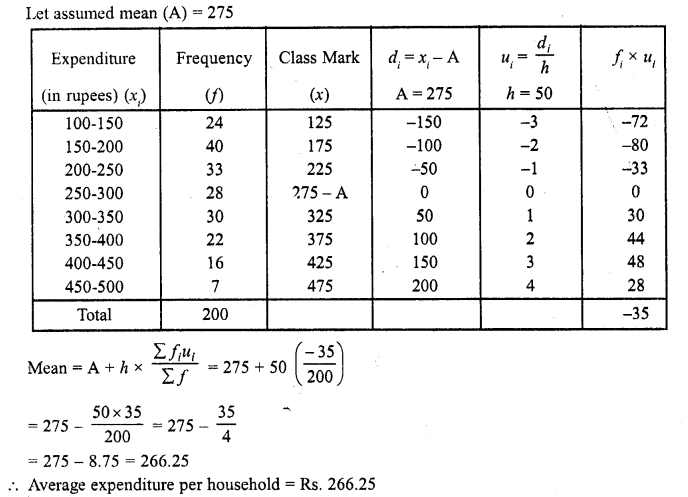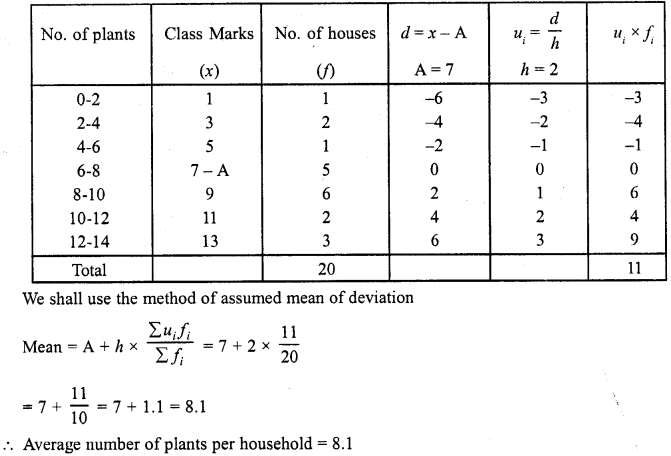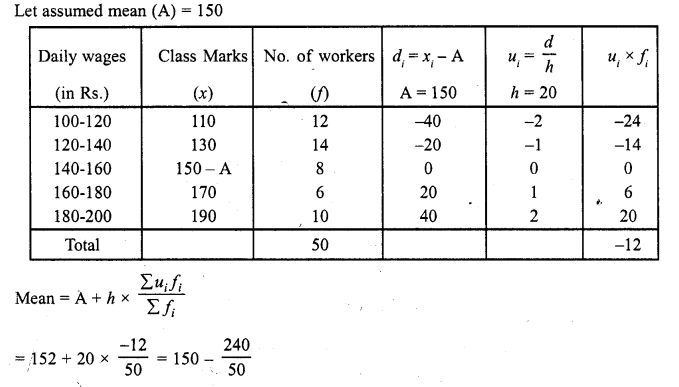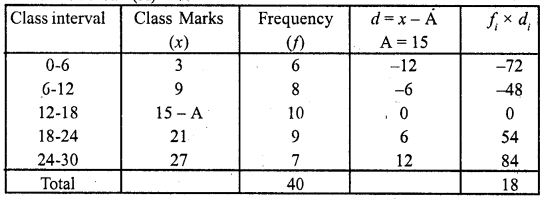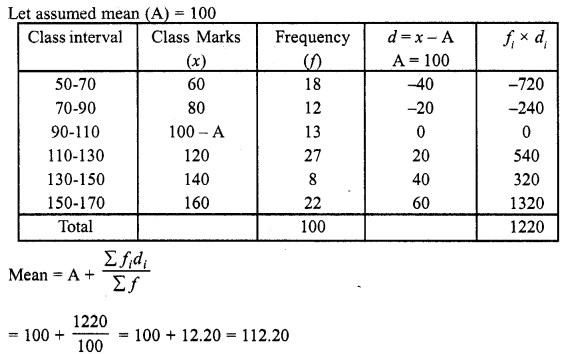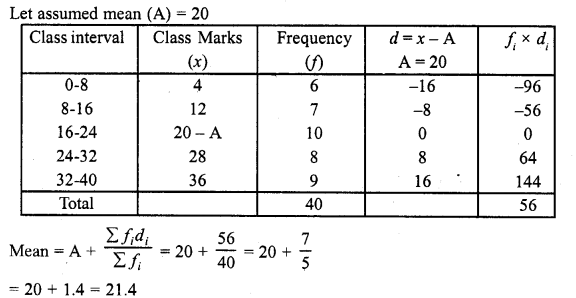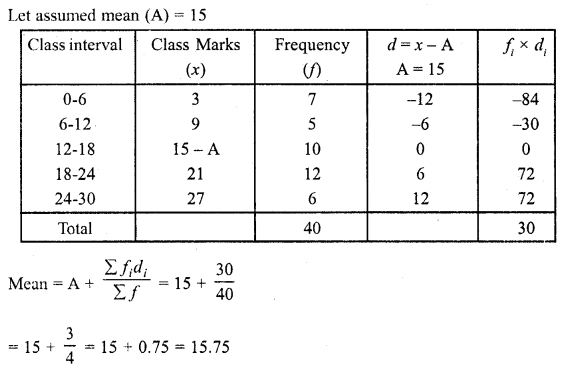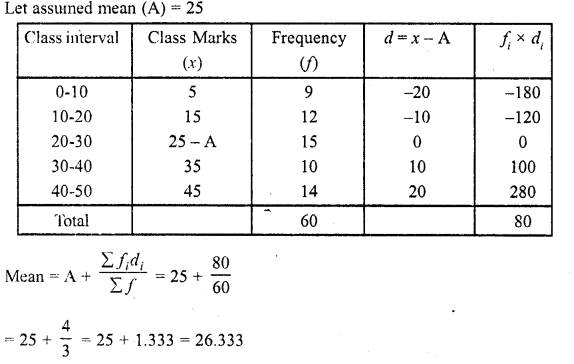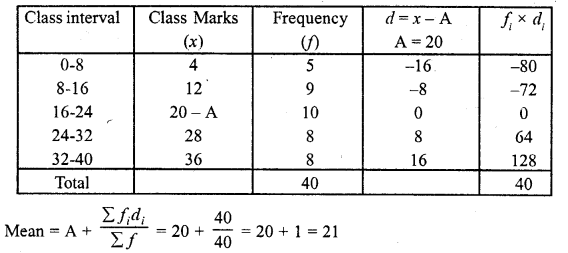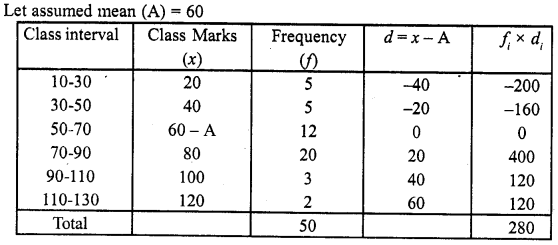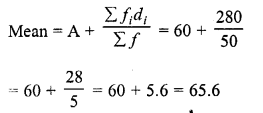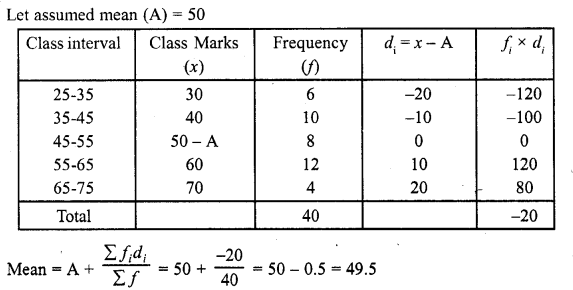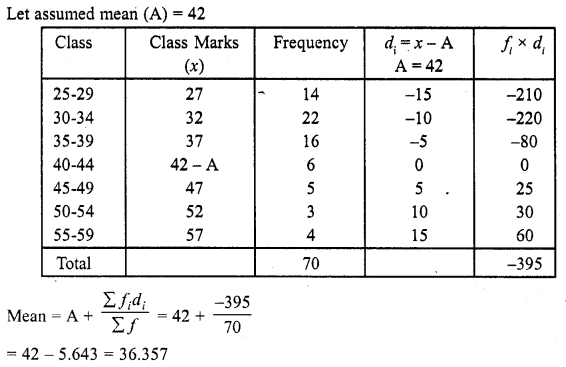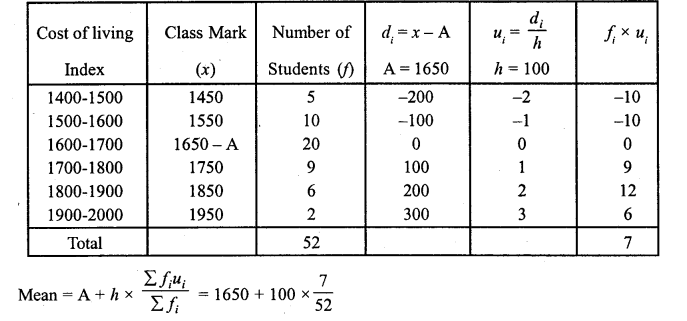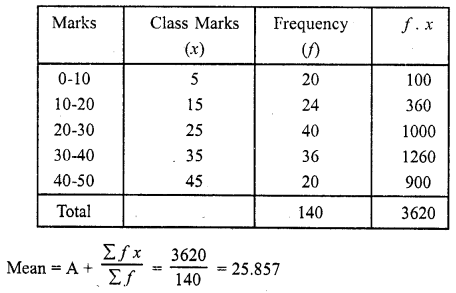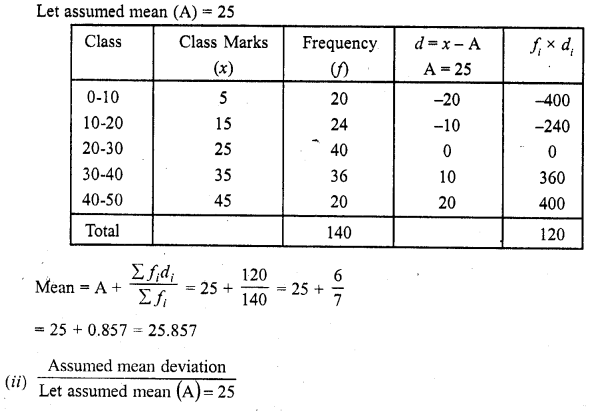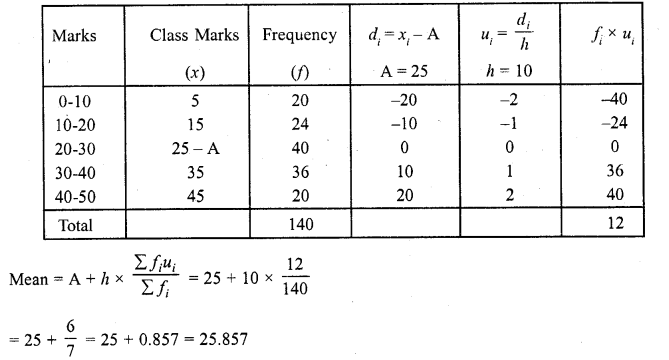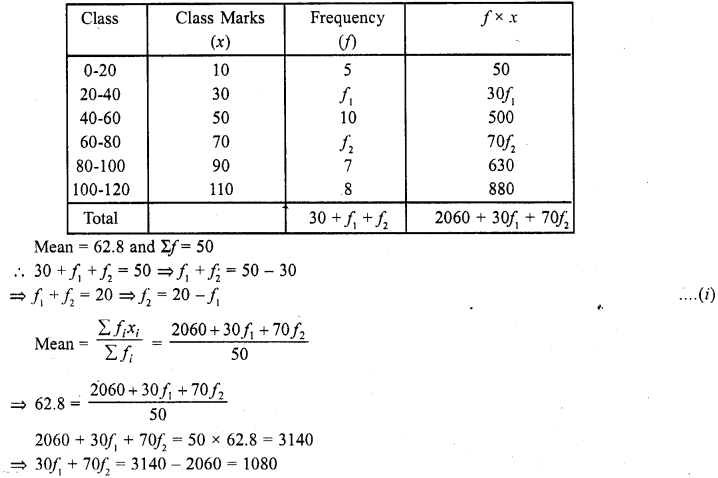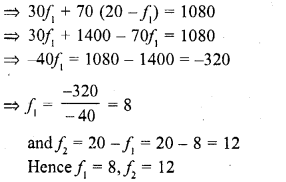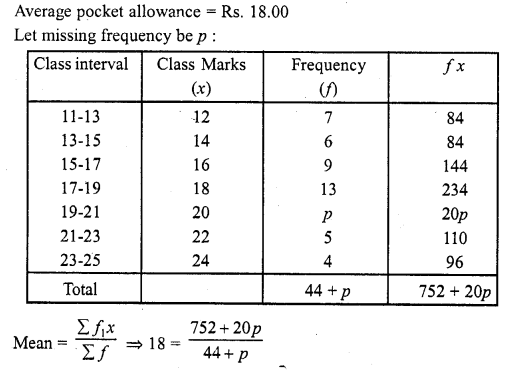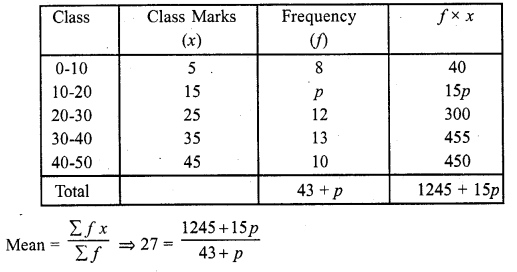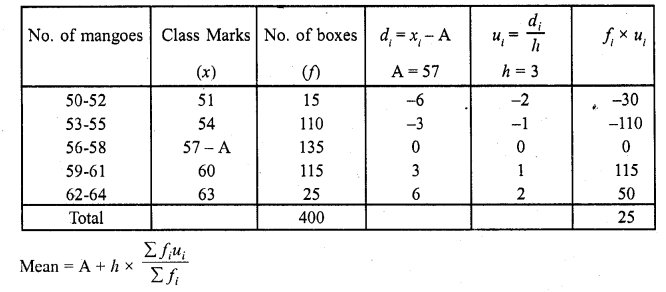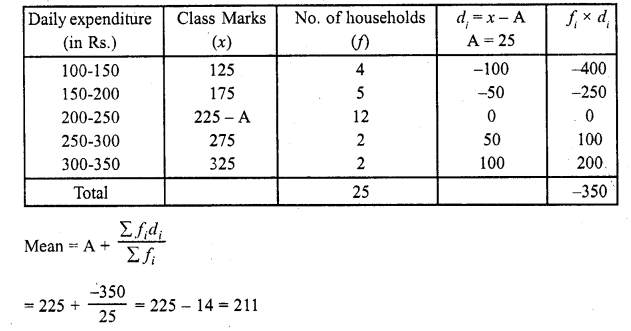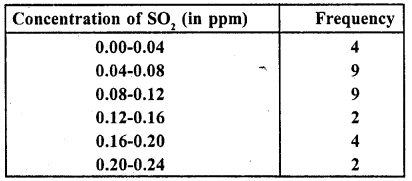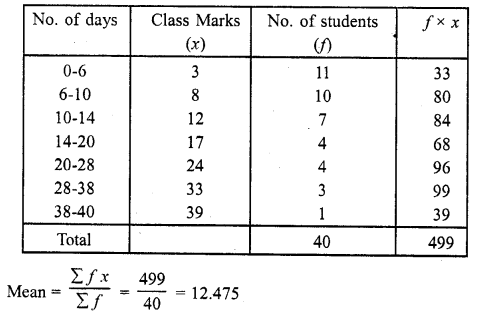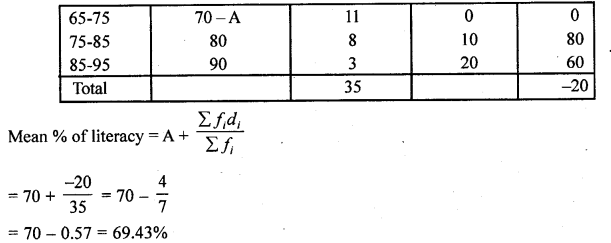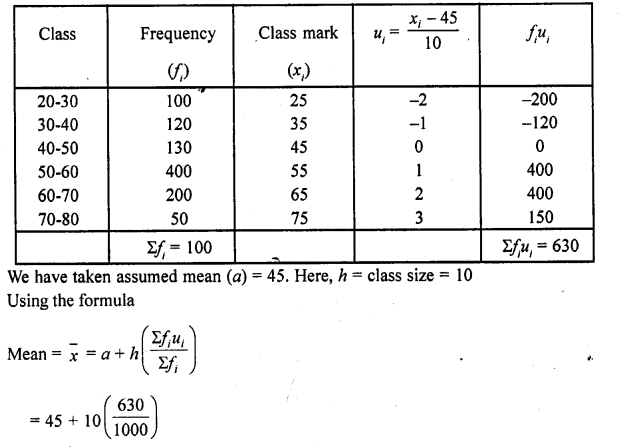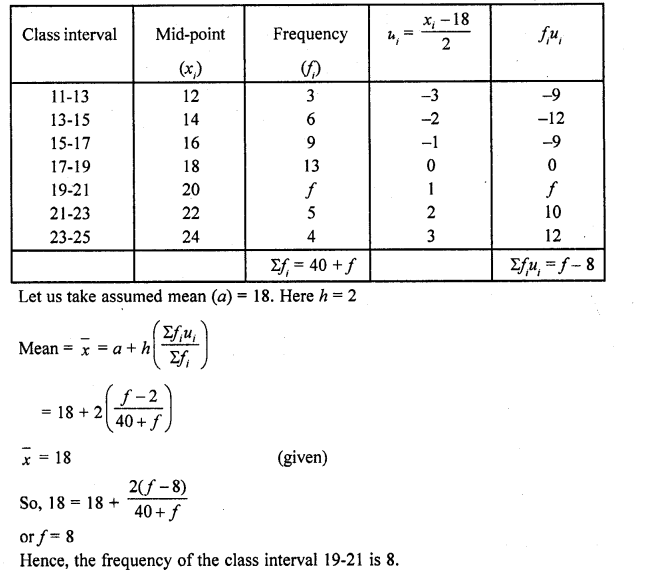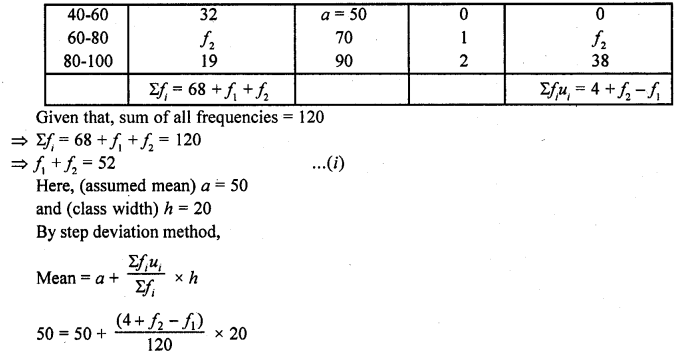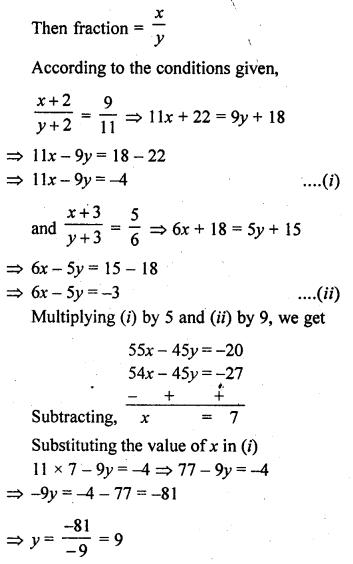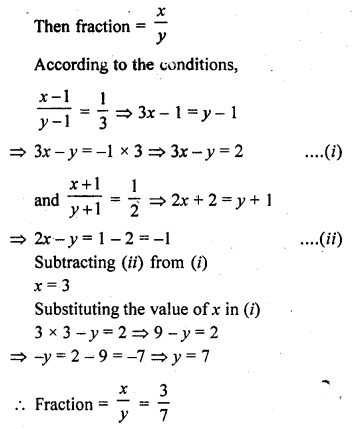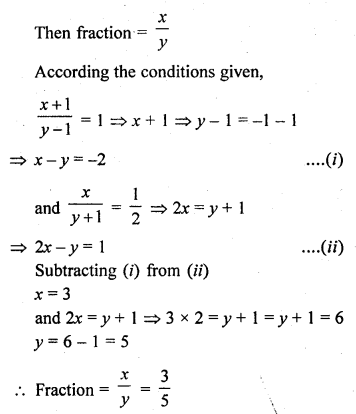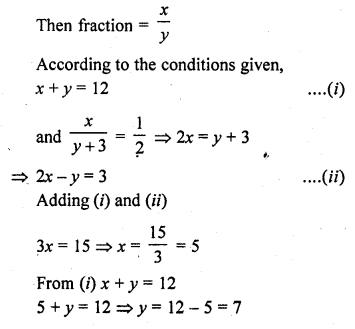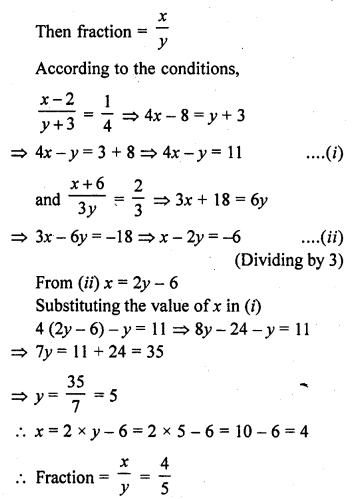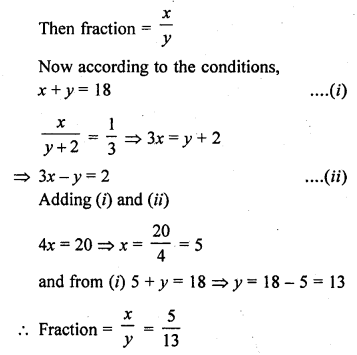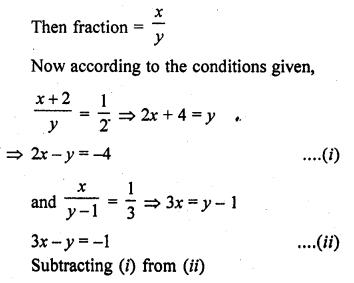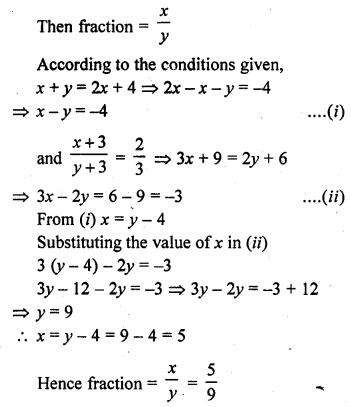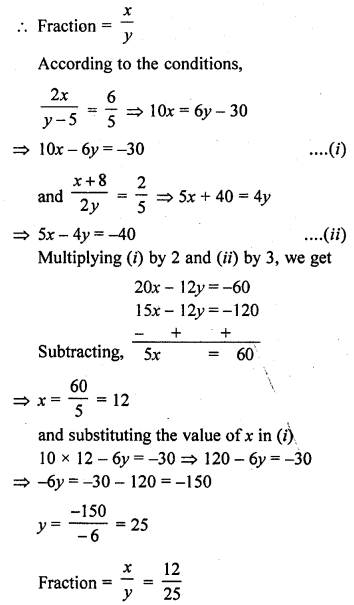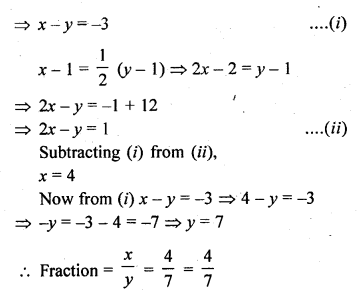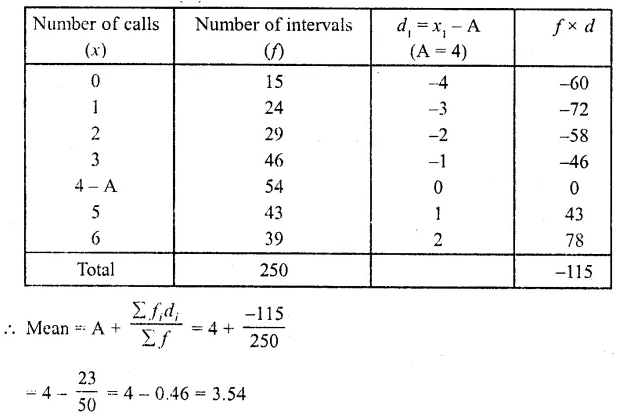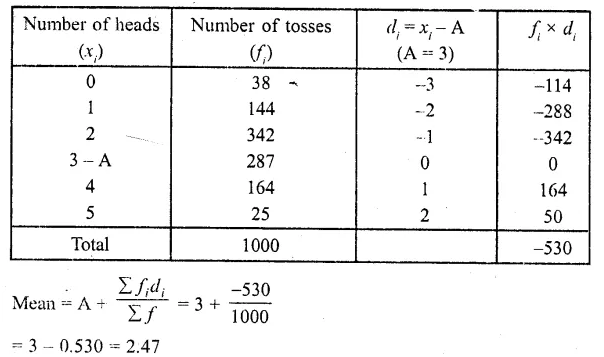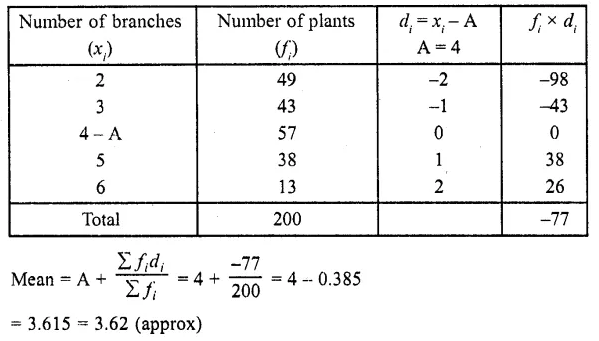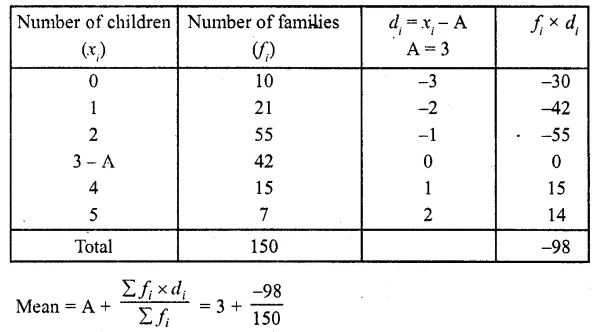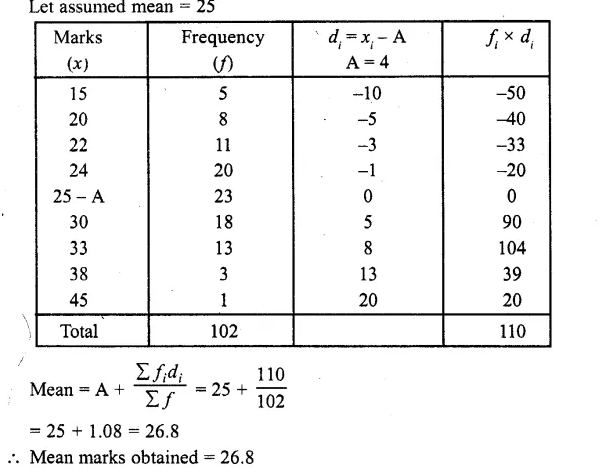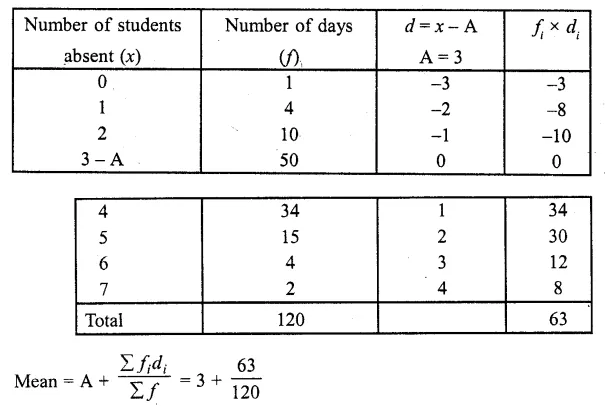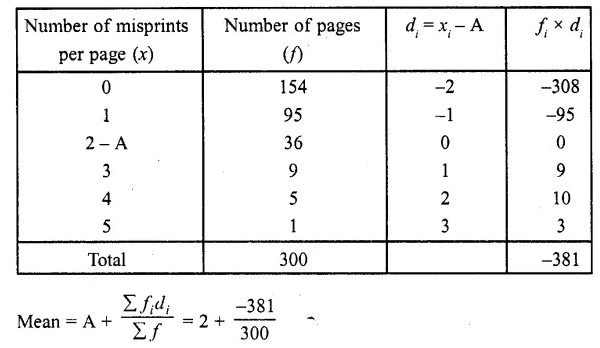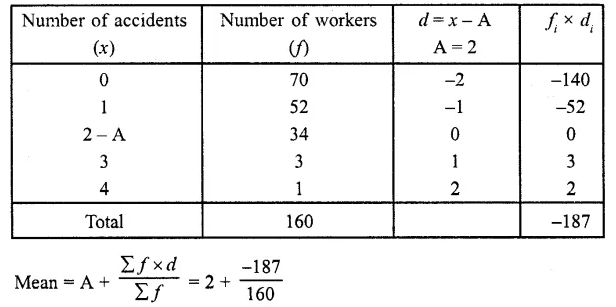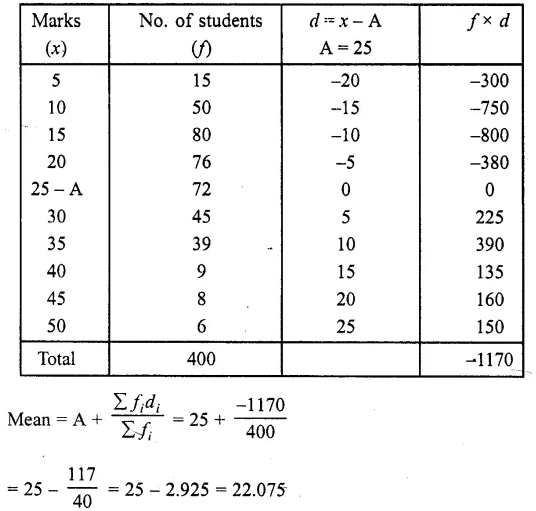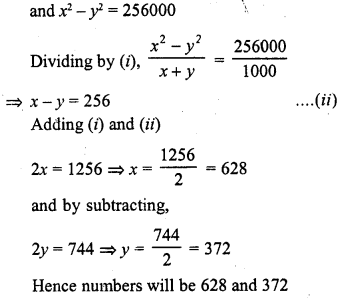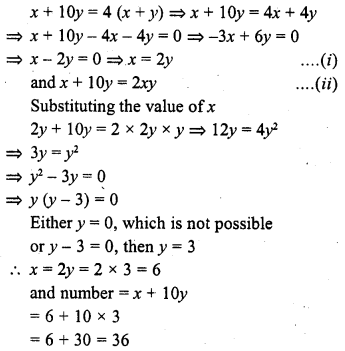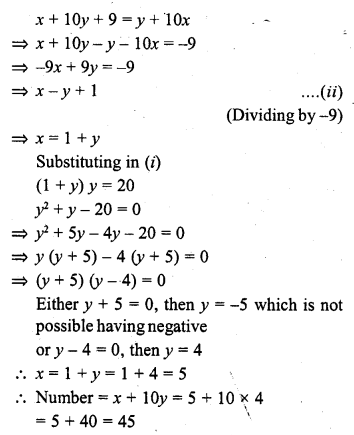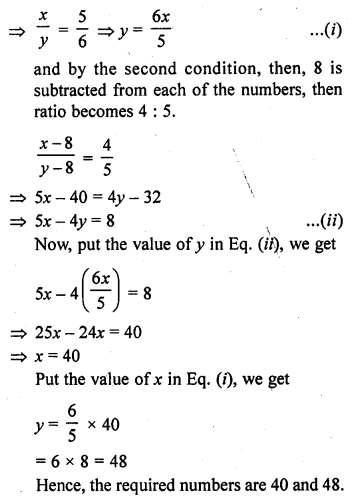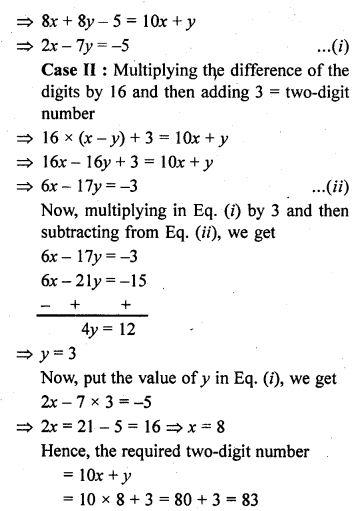RD Sharma Class 10 Solutions Chapter 3 Pair of Linear Equations in Two Variables Ex 3.9
These Solutions are part of RD Sharma Class 10 Solutions. Here we have given RD Sharma Class 10 Solutions Chapter 3 Pair of Linear Equations in Two Variables Ex 3.9
Other Exercises
- RD Sharma Class 10 Solutions Chapter 3 Pair of Linear Equations in Two Variables Ex 3.1
- RD Sharma Class 10 Solutions Chapter 3 Pair of Linear Equations in Two Variables Ex 3.2
- RD Sharma Class 10 Solutions Chapter 3 Pair of Linear Equations in Two Variables Ex 3.3
- RD Sharma Class 10 Solutions Chapter 3 Pair of Linear Equations in Two Variables Ex 3.4
- RD Sharma Class 10 Solutions Chapter 3 Pair of Linear Equations in Two Variables Ex 3.5
- RD Sharma Class 10 Solutions Chapter 3 Pair of Linear Equations in Two Variables Ex 3.6
- RD Sharma Class 10 Solutions Chapter 3 Pair of Linear Equations in Two Variables Ex 3.7
- RD Sharma Class 10 Solutions Chapter 3 Pair of Linear Equations in Two Variables Ex 3.8
- RD Sharma Class 10 Solutions Chapter 3 Pair of Linear Equations in Two Variables Ex 3.9
- RD Sharma Class 10 Solutions Chapter 3 Pair of Linear Equations in Two Variables Ex 3.10
- RD Sharma Class 10 Solutions Chapter 3 Pair of Linear Equations in Two Variables Ex 3.11
- RD Sharma Class 10 Solutions Chapter 3 Pair of Linear Equations in Two Variables VSAQS
- RD Sharma Class 10 Solutions Chapter 3 Pair of Linear Equations in Two Variables MCQS
Question 1.
A father is three times as old as his son. After twelve years, his age will be twice as that of his son then. Find their present ages. (C.B.S.E. 1992)
Solution:
Let present age of father = x
and that of son = y
According to the conditions,
x = 3y ….(i)
After 12 years,
Age of father = x + 12
and age of son = y + 12
x + 12 = 2(y + 12)
x + 12 = 2y + 24
=> 3y + 12 = 2y + 24 {From (i)}
=> 3y – 2y = 24 – 12
=> y = 12
x = 3y = 3 x 12 = 36
Hence present age of father = 36 years and age of son = 12 years
Question 2.
Ten years later, A will be twice as old as B and five years ago, A was three times as old as B. What are the present ages of A and B ? (C.B.S.E. 1992)
Solution:
Let present age of A = x years
and age of B = y years
10 years later
A’s age will be = x + 10
and B’s age will be = y + 10
x + 10 = 2(y + 10)
=> x + 10 = 2y + 20
=> x – 2y = 20 – 10
=> x – 2y = 10 ….(i)
5 years ago,
A’s age was = x – 5 years
and B’s age was = y – 5 years
x – 5 = 3 (y – 5)
=> x – 5 = 3y – 15
=> x – 3y = 5 – 15 = -10 ….(ii)
Subtracting (ii) from (i) we get
y = 20
and x – 2 x 20 = 10
=> x = 40 + 10 = 50
A’s present age = 50 years
and B’s present age = 20 years
Question 3.
Five years ago, Nuri was thrice as old as Sonu. Ten years later, Nuri will be twice as old as Sonu. How old are Nuri and Sonu ?
Solution:
Let present age of Nuri = x years
and age of Sonu = y years
5 years ago,
age of Nuri = (x – 5) years
and age of Sonu = (y – 5) years
x – 5 = 3 (y – 5) = 3y – 15
=> x = 3y – 15 + 5
=> x = 3y – 10 ….(i)
10 years later,
age of Nuri = x + 10
and age of Sonu = y + 10
x + 10 = 2 (y + 10) = 2y + 20
=> x = 2y + 20 – 10 = 2y+ 10 ….(ii)
From (i) and (ii)
3y – 10 = 2y + 10 => 3y – 2y = 10 + 10
=> y = 20
x = 3y – 10 [from (i)]
x = 3 x 20 – 10 = 60 – 10 = 50 years
and age of Sonu = 20 years
Question 4.
Six years hence a man’s age will be three times the age of his son and three years ago, he was nine times as old as his son. Find their present ages. (C.B.S.E. 1994)
Solution:
Let present age of a man = x years
and age of his son = y years
6 years hence,
age of the man = x + 6
and age of his son = y + 6
x + 6 = 3 (y + 6)
=> x + 6 = 3y + 18
=> x – 3y = 18 – 6 = 12
=> x – 3y = 12 ….(i)
3 years ago,
the age of the man = x – 3
and age of his son = y – 3
x – 3 = 9 (y – 3)
=> x – 3 = 9y – 27
=> x – 9y = -27 + 3
=> x – 9y = -24 ….(ii)
Subtracting (ii) from (i),
6y = 36
=> y = 6
From (i), x – 3 x 6 = 12
=> x – 18 = 12
=> x = 12 + 18 = 30
Present age of man = 30 years
and age of his son = 6 years
Question 5.
Ten years ago, a father was twelve times as old as his son and ten years hence, he will be twice as old as his son will be then. Find their present ages. (C.B.S.E. 1994)
Solution:
Let present age of father = x years
and age of his son = y years
10 years ago,
Father’s age = x – 10
and son’s age = y – 10
x – 10 = 12(y – 10)
=> x – 10 = 12y – 120
=> x – 12y = -120 + 10 = -110
=> x – 12y = -110 ….(i)
10 years hence,
Father’s age = x + 10
and his son’s age = y + 10
10y = 120
y = 12
From (ii), x – 2y = 10
x – 2 x 10 = 10
=> x – 24 = 10
=> x = 10 + 24
=> x = 34
Present age of father = 34 years
and age of his son = 12 years
Question 6.
The present age of a father is three years more than three times the age of the son. Three years hence father’s age will be 10 years more than twice the age of the son. Determine their present ages. (C.B.S.E. 1994C)
Solution:
Let present age of father = x years
and age of his son = y years
x = 3y + 3 …….(i)
3 years hence,
Father’s age = (x + 3)
and his son’s age = (y + 3)
x + 3 = 2 (y + 3) + 10 = 2y + 6 + 10
x + 3 = 2y + 16
=> x = 2y + 16 – 3 = 2y + 13 ….(ii)
From (i) and (ii)
3y + 3 = 2y + 13
=> 3y – 2y = 13 – 3
=> y = 10
and x = 3y + 3 = 3 x 10 + 3 = 30 + 3 = 33
Present age of father = 33 years
and age of his son = 10 years
Question 7.
A father is three times as old’as his son. In 12 years time, he will be twice as old as his son. Find the present ages of father and the son. (C.B.S.E. 1992, 1996)
Solution:
Let present age of father = x years
and age of son = y years
x = 3y ………(i)
12 years hence,
Father’s age = x + 12
and son’s age = y + 12
(x + 12) = 2 (y + 12)
=> x + 12 = 2y + 24
=> x = 2y + 24 – 12 = 2y + 12 ….(ii)
From (i) and (ii)
3y = 2y + 12
=> 3y – 2y = 12
=> y = 12
x = 3y = 3 x 12 = 36
Present age of father = 36 years and
age of son = 12 years
Question 8.
Father’s age is three times the sum of ages of his two children. After 5 years his age will be twice the sum of ages of two children. Find the age of father. (C.B.S.E. 2003)
Solution:
Let father’s present age = x years
and sum of ages of his two children = y
then x = 3y
=> y = \(\frac { 1 }{ 3 }\) x ….(i)
After 5 years,
Age of father = x + 5
and sum of age of two children = y + 2 x 5 = y + 10
(x + 5) = 2(y + 10)
x + 5 = 2y + 20
=> x = 2y + 20 – 5
x = 2y + 15 ….(ii)
From (i)
x = 2 x \(\frac { 1 }{ 3 }\) x + 15
=> x = \(\frac { 2 }{ 3 }\) x + 15
=> x – \(\frac { 1 }{ 3 }\) x = 15
=> \(\frac { 1 }{ 3 }\) x = 15
=> x = 15 x 3 =45
Age of father = 45 years
Question 9.
Two years ago, a father was five times as old as his son. Two years later, his age will be 8 more than three times the age of the son. Find the present ages of father and son. (C.B.S.E. 2004)
Solution:
Let present age of father = x years
and age of his son = y years
2 years ago,
age of father = x – 2
and age of son = y – 2
x – 2 = 5(y – 2)
=> x – 2 = 5y – 10
=> x = 5y – 10 + 2
=> x = 5y – 8 ………(i)
2 years later,
age of father = x + 2
and age of son = y + 2
x + 2 = 3 (y + 2) + 8
=> x + 2 = 3y + 6 + 8
=> x = 3y + 14 – 2 = 3y + 12 ….(ii)
From,(i) and (ii)
5y – 8 = 3y + 12
=> 5y – 3y = 12 + 8
=> 2y = 20
=> y = 10
From (i)
x = 5y – 8 = 5 x 10 – 8 = 50 – 8 = 42
Present age of father = 42 years
and age of son = 10 years
Question 10.
A is elder to B by 2 years. A’s father F is twice as old as A and B is twice as old as his sister S. If the ages of the father and sister differ by 40 years, find the age of A. (C.B.S.E. 1992C)
Solution:
Let age of A = x years
and age of B = y years
According to the conditions,
x = y + 2
=> y = x – 2 ….(i)
Age of A’s’ father = 2x
Age of B’s sisters = \(\frac { y }{ 2 }\)
2x – 2y = 40
4x – y = 80 ….(ii)
4x – (x – 2) = 80
=> 4x – x + 2 = 80
3x = 80 – 2 = 78
x = 26
A’s age = 26 years
Question 11.
The ages of two friends Ani and Biju differ by 3 years. Ani’s father Dharam is twice as old as Ani and Biju as tiwce as old as his sister Cathy. The ages of Cathy and Dharam differ by 30 years. Find the ages of Ani and Biju.
Solution:
Let age of Ani = x years
and age of Biju = y years
x – y = 3 ….(i)
Ani’s father Dharam’s age = 2x
and Cathy’s age = \(\frac { 1 }{ 2 }\) y
But 2x – \(\frac { 1 }{ 2 }\) y = 30
=> 4x – y = 60 ….(ii)
Subtracting,
3x = 57
x = 19
and 4x – y = 60
=> 4 x 19 – y = 60
=> 76 – y = 60
=> 76 – 60 = y
=> y = 16
Anil’s age = 19 years
and Biju’s age = 16 years
Question 12.
Two years ago, Salim was thrice as old as his daughter and six years later, he will be four years older than twice her age. How old are they now? [NCERT Exemplar]
Solution:
Let Salim and his daughter’s age be x and y year respectively.
Now, by first condition,
Two years ago, Salim was thrice as old as his daughter.
i. e., x – 2 = 3(y – 2)
=> x – 2 = 3y – 6
=> x – 3y = -4 …(i)
and by second condition,
six years later, Salim will be four years older than twice her age.
x + 6 = 2(y + 6) + 4
=> x + 6 = 2y + 12 + 4
=> x – 2y = 16 – 6
=>x – 2y = 10 …(ii)
On subtracting Eq. (i) from Eq. (ii), we get
y = 14
Put the value of y in Eq. (ii), we get
x – 2 x 14 = 10
=> x = 10 + 28
=> x = 38
Hence, Salim and his daughter’s age are 38 years and 14 years, respectively.
Question 13.
The age of the father is twice the sum of the ages of his two children. After 20 years, his age will be equal to the sum of the ages of his children. Find the age of the father. [NCERT Exemplar]
Solution:
Let the present age (in year) of father and his two children be x, y and z year, respectively.
Now by given condition, x = 2(y + z) …(i)
and after 20 years,
(x + 20) = (y + 20) + (z + 20)
=> y + z + 40 = x + 20
=> y + z = x – 20
On putting the value of (y + z) in Eq. (i) and we get the present age of father
=> x = 2 (x – 20)
x = 2x – 40
=> x = 40
Hence, the father’s age is 40 years.
Hope given RD Sharma Class 10 Solutions Chapter 3 Pair of Linear Equations in Two Variables Ex 3.9 are helpful to complete your math homework.
If you have any doubts, please comment below. Learn Insta try to provide online math tutoring for you.

